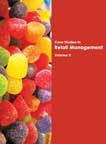Retail Management
 |
Details
Textbook:
Pages : 487;
Paperback;
210 X 275 mm approx.
Pricing
Textbook Price: Rs. 900;
Available only in INDIA
Detail Table of Contents
Click below to view
HTML
PDF
Buy Now
Please allow 5 to 10 days for delivery.
Detail Table of Contents
Store Location and Site Evaluation : Chapter 6
SUMMARY:
Retailers desire to set up their outlets in the best possible locations. The optimum store location for a retailer is based on many factors like the type of industry, the product category being sold, and the degree of competition. Retail stores are located where the opportunities offered by the market are at a maximum.
|
|
shape of the trade area depends on the size of the store, the type of the store, competitor’s placement, and the time taken to travel to the store. Reilly's Law and Huff's model help retailers define their trade area. Globally, retailers use geographic information systems to analyze and delineate their trade areas. And three major factors that help retailers analyze their trade areas accurately: the characteristics of the population, the characteristics of the economic base, the competition and the level of retail saturation.
There are three types of locations that a retailer can consider for locating its store – isolated store, unplanned business districts and planned shopping centers. Important factors that are considered when selecting a site are: sales potential; accessibility; pedestrian traffic; terms of occupancy; and the legal and political environment.
The retailer must go through all these steps of location and site evaluation to find the "one hundred percent location".



